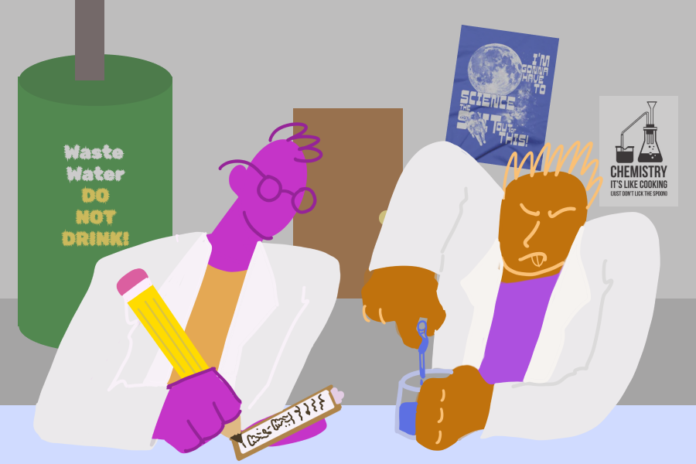UC Davis sponsors wastewater surveillance in Yolo County and the Central Valley
By LEVI GOLDSTEIN — city@theaggie.org
During the COVID-19 pandemic, with assistance from the Centers for Disease Control and Prevention (CDC), wastewater treatment plants have been monitoring sewage to detect COVID-19 in communities before a surge in positive cases is detected through traditional testing.
According to the CDC’s website, the National Wastewater Surveillance System (NWSS) was launched in September 2020. Participating wastewater plants send samples of sewage to laboratories, where they are tested for the presence of the virus. Krystin Kadonsky, an environmental systems Ph.D. student at UC Merced, is one of many researchers working on surveillance projects in the state of California.
“Within wastewater and the sample, there [are] gene targets that you can look for,” Kadonsky said. “For COVID, we’re looking at SARS-CoV-2 RNA to do tracking for different levels of the virus.”
Data collected from across the U.S. is published online on a map. Since its founding, the NWSS has on-boarded a total of 755 testing sites. Sewage surveillance has been essential for pandemic preparedness and prevention.
“It’s a good supplemental tool to clinical testing to show the severity of an outbreak,” Kadonsky said. “[It] can help indicate when to send supplies to those areas or how to prepare for it or if quarantine needs to happen. So it helps public health departments with their decision making on how to protect the community from the virus.”
UC Davis has been a central partner in these efforts. Healthy Davis Together expanded by starting a second branch, Healthy Central Valley Together, and partnered with UC Merced to bring wastewater surveillance to the central valley.
Since the project began in spring 2021, eight treatment plants have been brought on, according to Kadonsky. Four of these are located in the Yolo County area, in Davis, Winters, Woodland and Esparto, and four are located in the Central Valley, in Modesto, Merced, Turlock and Los Banos. William Wong, the director of utilities at the City of Modesto, has been overseeing the project at Modesto wastewater plants.
“We had thought about doing this for a long time, but we didn’t have the lab to test for it,” Wong said. “So when the UC Merced-UC Davis team approached us [and said they] would provide testing services for us and all we needed to do was collect samples from our wastewater plant, we agreed to do so.”
Wong and Kadonsky agree that sewage surveillance contributes significantly to overall public health. An important part of the project for Kadonsky has been addressing health inequalities.
“Something that I wanted to promote for this project was, when we were looking at the treatment plants to onboard, […] we did an evaluation of California, and we saw where there was a lack of wastewater monitoring, and then within those regions we looked at the income levels or the health disparities within that area to identify the areas most in need,” Kadonsky said. “The overall mission of the project is health equity and promoting that within communities and being able to give resources to the communities that need it the most.”
Wong also strongly believes in the project’s mission. He said that the testing is part of the Utilities Department’s commitment and responsibility to the residents of the City of Modesto.
Despite the need for wastewater monitoring that has arisen during the COVID-19 pandemic, there is potential for this practice to continue to grow and even become standard practice in the future, according to an article in the Los Angeles Times. Wong said that the City of Modesto is working to develop its own independent monitoring system and a corresponding alert system for potential disease outbreaks.
“Knowing what’s in our wastewater, as we found out through COVID-19, is a really good indicator of what’s happening in the community,” Wong said.
Written by: Levi Goldstein — city@theaggie.org




